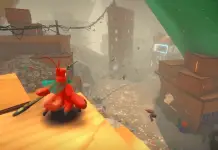The Assassin’s Creed franchise has dramatically evolved since its debut in 2007. Known for its stealth-based gameplay, fluid parkour mechanics, and the use of limited tools that required strategic planning, the early entries in the series emphasized precision, patience, and immersive storytelling.
Over time, however, Ubisoft began shifting the formula. RPG elements like character leveling, expansive skill trees, and a wide array of loot systems became central to the experience. This significantly departed from the stealth-driven identity that originally defined Assassin’s Creed.
For me, this was where Ubisoft started to lose what made Assassin’s Creed special. The newer RPG-focused titles became bloated with excessive content, leading to pacing issues and a loss of the tight, narrative-focused charm the series once had. The gameplay often felt stretched thin, turning what was once a tight-paced adventure into a grind-heavy experience.
What reignited my excitement was the announcement of Assassin’s Creed Shadows, which finally brings the series to feudal Japan—a setting fans have been requesting for years, and the idea of exploring Japan through the lens of an Assassin’s Creed game was a dream come true.
However, that excitement was mixed with concern. Ubisoft is no longer the same developer it was in the 2000s. I wondered whether it could deliver a refined and engaging experience set in such a beloved and highly requested period. In some ways, Assassin’s Creed: Shadows succeeds—it captures the atmosphere and offers moments of brilliance. But in other areas, it feels inconsistent, with mechanics and pacing that don’t always come together for a smooth gameplay experience.
Developer & Publisher // Ubisoft
Platforms // PC, PlayStation 5, Xbox Series X|S (Ubisoft +)
MSRP & Release Date // $69.99, March 20th, 2025
Reviewed On // PlayStation 5 Pro
Two Fates Intertwined in Assassin’s Creed Shadows

In Assassin’s Creed Shadows, gameplay is driven by two distinct protagonists, bringing their unique combat styles and narrative perspectives. Players can generally switch between the two characters at will, although specific story missions will require you to play as a specific one to progress the plot. This open-world dual-protagonist approach to the narrative delivery often felt messy since it wasn’t always easy to understand what was best to do next.
One of the main characters is Naoe, the daughter of a legendary shinobi, who seeks vengeance after the fall of her clan. Naoe’s gameplay focuses on stealth, agility, and traditional ninja tactics—perfect for players who enjoy silent assassinations, rooftop infiltration, and shadowy maneuvering. Her parkour abilities make navigating the environment seamless and immersive.
On the other hand, you can take control of Yasuke, a powerful African samurai brought to Japan by Portuguese traders. Known for his brute strength and commanding presence, Yasuke excels in direct combat, using heavy weapons and sheer power to overwhelm enemies.
Yasuke Feels Cumbersome in the Wrong Ways
However, in my experience, this is where the gameplay starts to feel inconsistent. Yasuke’s build makes him feel sluggish and out of place regarding the series’ iconic parkour system. While he technically can climb and traverse terrain, I often found it frustratingly difficult to scale even simple obstacles, like a five-foot wall. His cumbersome design makes it hard reaching high vantage points and synchronization spots, a key for unlocking fast travel and revealing points of interest on the map.
As a result, I found myself favoring Naoe for most of the open-world exploration, only switching to Yasuke when the game required it. While the contrast in playstyles is an interesting concept, the execution, particularly in terms of traversal and environmental interaction, could benefit from significant refinement to feel genuinely balanced.
The World of Assassin’s Creed Shadows Is Both Beautiful and Boring

What I loved about AC Shadow’s World
There’s no doubt that Assassin’s Creed Shadows is one of the most visually stunning entries in the franchise and arguably one of the most beautiful games of this generation. I played it on the PlayStation 5 Pro, and the environments were breathtaking. Even with this being the case, the game consistently remained at 60fps, and I never experienced noticeable dips while playing in Performance mode.
What truly elevated the visual experience were the dynamic seasonal changes. These transitions occur roughly every hour of gameplay and can be triggered manually when available or automatically when using fast travel. The winter season, in particular, stood out as a highlight—it perfectly showcased the game’s artistic direction and immersive atmosphere. Beyond aesthetics, the seasons play a key role in gameplay mechanics. Seasonal changes directly impact your scouts, who are essential tools for locating objectives or gathering materials for your hideout.
The World Starts to Bleed Together – Issues of Assassin’s Creed Shadows
Assassin’s Creed Shadows takes a more hands-off approach to quest navigation. Instead of marking your destination, the game gives you vague clues—like “He was last seen southwest of Omi.” You usually get three hints and must explore the environment to figure out where to go, using a limited number of scouts to narrow down the location. While this encourages organic exploration, it won’t be for everyone.
I found the quest design lacking, with one major frustration being how unlocking viewpoints only reveals question marks on the map without explaining what they signify. In theory, this encourages curiosity and discovery. But in practice, it becomes repetitive and, after a while, feels unrewarding.
Visually, Assassin’s Creed Shadows is stunning. However, the world design starts to feel like copy-and-paste. Many villages and castles look nearly identical, with very little variety to make each area stand out. As a result, exploration loses its spark and begins to feel more like a checklist than an adventure.
Movement across the map can also be a pain. Some areas are overly tight, with dense forests and narrow paths that limit your freedom to explore. What looks like a shortcut through the woods often ends with your character stuck or having to turn around.
To make getting around better, I recommend enabling the Pathfinder feature. It will guide you along safe, accessible routes and help you avoid frustrating detours or dead ends.
Activities in The Open World

The open-world activities in Assassin’s Creed: Shadows—such as clearing castles or praying at shrines—aren’t inherently bad. Some of them are enjoyable early on. However, they quickly become repetitive due to a lack of variety, making the overall gameplay monotonous as it progresses.
I’ll dive deeper into this in the “Accessibility” section at the end of the review, but locations—specifically larger castles—don’t seem designed with high-difficulty stealth gameplay in mind. For example, attempting a stealth-only approach in these high-density enemy zones often took me upwards of 40 minutes on Expert, which felt more exhausting than rewarding.
That said, these activities are highly recommended because they reward you with Knowledge Points. These points are essential for unlocking new tiers in your skill trees, such as Samurai, Katana, and Shinobi, allowing you to shape your character’s build according to your preferred playstyle. Also, these activities often reward you with loot that will serve as an upgrade, including a better weapon or headgear.
I focused on the Tanto weapon and invested heavily in the Shinobi skill tree for Naoe, as it complemented my stealth-focused approach. This customization adds depth to the gameplay, even if the missions begin to feel repetitive.
Combat Variety in Assassin’s Creed Shadows

One of the standout features of Assassin’s Creed Shadows is the ability to play as two unique protagonists, each with their distinct weapons, tools, and skills. This dual-character system offers refreshing variety and customization in approaching combat and stealth.
Yasuke, the powerful samurai, uses heavy-hitting weapons like the Long Katana, Naginata, Kanabo, a bow, and even a rifle. His combat style focuses on strength and raw power. For example, one of Yasuke’s special abilities lets him deliver a powerful kick that sends enemies flying several feet backward.
On the other hand, Naoe brings a more agile and stealth-focused playstyle. She uses weapons like a Katana, Kusarigama, and a Tanto dagger. Her abilities are built around speed and precision—she can throw her Tanto to damage the target, then close the distance with a deadly hidden blade finisher.
I enjoyed Naoe the most since stealth was my preferred method of attack. Also, even though Yasuke was fun to play at times, his overall style and move set felt a bit out of place for an Assassin’s Creed title. Overall, I enjoyed the combat, feeling it was satisfying. I wish there were a few more finishing animations, though, as certain aspects became stale.
In-Depth Accessibility Options

Credit too Ubisoft for including a robust set of accessibility options in Assassin’s Creed Shadows. Features like visual aids for colorblind players and audio cues during exploration make the game more inclusive and adaptable to different player needs.
I found several of these accessibility options genuinely helpful. They allowed me to fine-tune specific aspects of the game, improving my overall experience. One standout feature is the ability to adjust combat and stealth difficulty separately. For example, I set both to Expert. On higher stealth difficulty, enemies can even spot you from rooftops, which adds a challenging aspect and showcases Naoe’s ability to go prone.
That said, Ubisoft could take it further, allowing players to adjust enemy density and difficulty, especially for those who prefer stealth-heavy gameplay.
A Wind’s Path – Guided Mode
Another feature I appreciated was Guided Mode. Toward the end of the game, I began to feel fatigued by the constant need to decipher vague objective locations. Enabling Guided Mode made objectives more straightforward and streamlined, providing traditional waypoint navigation for players who prefer a more direct experience.
These options enhance accessibility and give players the flexibility to tailor the game to their personal playstyle and comfort level.
Hideaway – The Hideout Mechanic

One aspect of Assassin’s Creed Shadows that I haven’t touched on yet is the hideout. While upgrading your hideout is entirely optional, I highly recommend investing in building upgrades.
For instance, improving the blacksmith allows you to modify high-tier gear, significantly enhancing your combat capabilities, such as swapping out engravings on gear. This will allow you to change things like Critical Hit damage and more.
However, there is one frustrating issue with the hideout: the game locks to a 30fps frame rate. This is due to the quality mode being forced on, which can be jarring, especially when switching between high-intensity action and the slower pace of the hideout. I hope Ubisoft adds an option to tweak this in future updates for smoother performance.
Final Thoughts on Assassin’s Creed: Shadows
I completed my playthrough of Assassin’s Creed Shadows in about 50 hours. While certain parts of the game became repetitive and stale, there was still enough variety to keep me engaged until the credits rolled. Although the story felt messy, and the English voice acting didn’t fully hit the mark, the game offers plenty of options to tailor the experience to your liking. Features like Guided Mode and Immersive Dialogue (which replaces standard English voice acting) are great for personalizing the experience.
For me, the ideal settings were Expert difficulty for both combat and stealth. I also turned on One-Hit Assassinations, as it felt frustrating to sneak up behind an enemy only to find that a level difference prevented me from taking them out in a single blow. Lastly, Guided Mode was perfect for cleaning up side objectives around the map without getting lost in vague directions.
Final Score 7.5/10
Pros
- Beautiful Art Style and Design
- Fun Combat with Plenty of Options
- Fantastic Performance
- In-depth Accessibility Settings
Cons
- Bad English voice acting at times
- A World that didn’t feel interesting
- The Dual Protagonist story didn’t feel cohesive
This game was reviewed using a copy purchased by the reviewer.





































